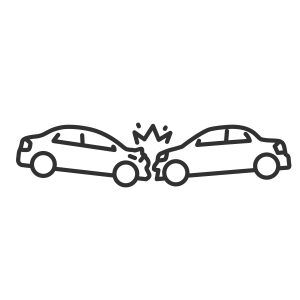What To Do If You Are In A Head-On Collision
 Head-on collisions almost always pose a very real risk of injury or death.
Head-on collisions almost always pose a very real risk of injury or death.
For survivors, the costs of recovery can be enormous. If you have been injured in a front-impact crash that was not your fault, you may be entitled to significant compensation.
You should protect your rights by taking the following steps:
1. Call 9-1-1 To Inform The Police Of Injuries, Property Damage, Or Death
Drivers do not always have to inform law enforcement if they have been involved in a minor fender-bender. However, in New York, motorists are required to call the police if they are in an accident that results in any of the following:
- Physical injury;
- Death; or
- Property damage of $1,000 or more.
Calling 9-1-1 could make an already difficult situation seem all the more stressful, but a police report could improve your odds of making a successful legal recovery. Even if investigators cannot determine fault, their findings could still strengthen your case.
2. See The Doctor, Even If You Don’t Think You’ve Been Hurt
The medical consequences of a crash are not always immediately noticeable. Some injuries—including internal organ damage, and traumatic brain injuries—may not present any symptoms, yet still have the potential to trigger life-threatening complications if left untreated.
Seeing a doctor after an accident not only provides peace of mind and protection against “invisible injuries,” but ensures that your concerns are recorded and that they cannot be easily misconstrued as an exaggeration.
3. Collect Evidence, And Record Your Version Of Events
Any evidence you collect from an accident site could make a big difference in settlement negotiations and at trial. Depending on the circumstances of your collision, relevant evidence could include, but is not limited to, the following:
- A picture or video recording showing damage to the front of your car;
- Pictures of damage to other parts of your vehicle, like the windshield, doors, and tires;
- Photographs of any dangerous condition you believe may have caused or contributed to your collision;
- Images of visible injuries you sustained; and
- The full names and phone numbers of any person who may have witnessed your accident.
If you were seriously injured in your accident and could not remain on-scene, the Dietrich Law Firm P.C. could dispatch investigators to begin collecting, protecting, and preserving evidence as soon as possible.
4. Avoid Speaking To Insurance Adjusters Or Accepting Fast And Easy Offers Of Compensation
Insurance adjusters can move fast after an accident.
Even though New York is a no-fault state, your company may still need certain information about the collision. And, if you file a personal injury lawsuit against an at-fault driver and their insurer, your claim could trigger a much more intensive investigation.
Although you might eventually be required to speak to an adjuster, you should always consult an experienced head-on car crash attorney before agreeing to do any of the following:
- Provide a recorded statement;
- Sign a medical release; and
- Approve a settlement offer.
5. Contact An Attorney
The Dietrich Law Firm P.C.’s experienced team of personal injury attorneys could help you negotiate obstacles on your road to recovery by taking steps including, but not limited to the following:
- Assessing your damages;
- Investigating the causes of your accident;
- Collecting evidence from the crash site;
- Interviewing eyewitnesses; and
- Negotiating with insurance companies on your behalf.
The Dietrich Law Firm P.C. has spent decades helping head-on collision victims fight for their rights—and we have the results to prove it.
 Buffalo Personal Injury Lawyer News
Buffalo Personal Injury Lawyer News

